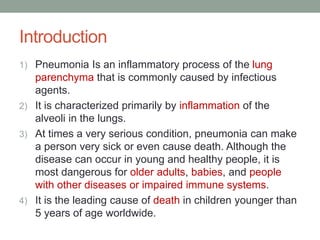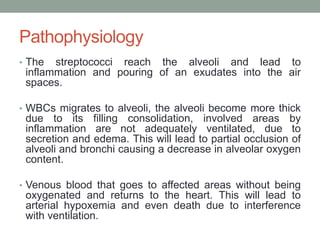Pneumonia is an inflammatory lung condition caused by bacteria or viruses that enter the lungs. When pathogens enter the alveoli, or air sacs, white blood cells rush to fight the infection, filling the sacs with fluid and pus. Streptococcus pneumoniae is the most common bacterial cause. Risk factors include old age, smoking, lung diseases, and weakened immunity. Symptoms include fever, chills, cough with colored mucus, chest pain, and difficulty breathing. Diagnosis involves physical exam, chest x-rays, and tests of sputum or blood. Antibiotics treat bacterial pneumonia while rest and fluids help viral cases. Vaccines can prevent pneumococcal pneumonia.























